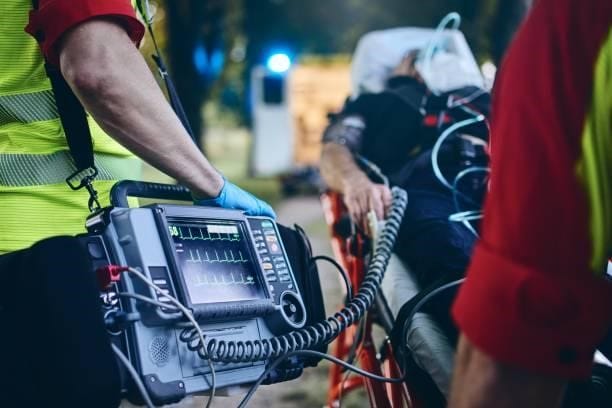Emergency Position Indicating Radio Beacon (EPIRB)
Emergency Position Indicating Radio Beacon (EPIRB) is a crucial device designed to alert search and rescue services (SAR) during emergencies at sea. It serves as tracking equipment, transmitting a distress signal on a specified band to aid in locating lifeboats, life rafts, ships, or individuals in distress.
EPIRBs are installed on ships and other vessels after being registered with the national search and rescue forces associated with that boat. This registration process allows for quicker confirmation of false alerts and facilitates prompt rescue operations in case of genuine emergencies.
It’s important to note that an EPIRB is considered a secondary means of distress alerting. In the hierarchy of alerting SAR authorities during distress situations, it comes into play after primary methods.
Mandatory requirements dictate that every ship must carry at least one EPIRB, while all registered ships and various types of vessels must have two EPIRBs onboard.
Type Of EPIRBs
There are several types of EPIRBs available:
- COSPAS-SARSAT EPIRBs: These work on the 406.025 MHz and 121.5 MHz bands and are applicable for all sea areas.
- INMARSAT E EPIRBs: These operate on the 1.6 GHz band and are applicable for sea areas A1, A2, and A3.
- VHF CH 70 EPIRBs: These operate on the 156.525 MHz band and are applicable for sea area A1 only.
The working mechanism of an EPIRB involves two radio transmitters: a 5-watt transmitter and a 0.25-watt transmitter, both operating at 406 MHz, the standard international frequency for distress signals. The 5-watt transmitter is synchronized with a geosynchronous GOES weather satellite orbiting the Earth.
COSPAS-SARSAT is an international satellite-based search and rescue system established by the U.S., Russia, Canada, and France to detect emergency radio beacons. EPIRBs transmit signals to the satellite, containing encrypted identification numbers that provide crucial information such as the ship’s identification, date of the distress event, nature of distress, emergency contacts, and position.
The Local User Terminal (satellite receiving units or ground stations) uses Doppler Shift to calculate the position of the casualty, and the information is relayed to the Mission Rescue Coordination Center (MRCC), which oversees the execution of the rescue mission.
If the EPIRB is not compatible with a GPS receiver, the geosynchronous satellite can only pick up radio signals emitted by the EPIRB, providing a rough idea of its location. However, if the EPIRB contains a GPS receiver, it can more accurately pinpoint the distress location.
The use of 406 MHz beacons has been prioritized over 121.5 MHz beacons due to their advantages, and the satellite processing of 121.5 MHz was stopped by satellites in February 2009. Aircraft may still use Emergency Locator Transmitters (ELTs), but alerts from these devices need to be confirmed by two other independent non-satellite sources before action is taken.
In summary, EPIRBs play a critical role in ensuring the safety of ships and individuals at sea by providing an effective means of distress alerting and rescue coordination.
Need Help At Sea ? Contact Us Now!
BALANCIA SHIP AGENCY
HQ Address : Komplex Ruko Golden City Block C No.3A, Batam City, Indonesia 29432
www.balancia.co.id
Mobile Ph. : +628112929654
Office Ph. : +627784883769










